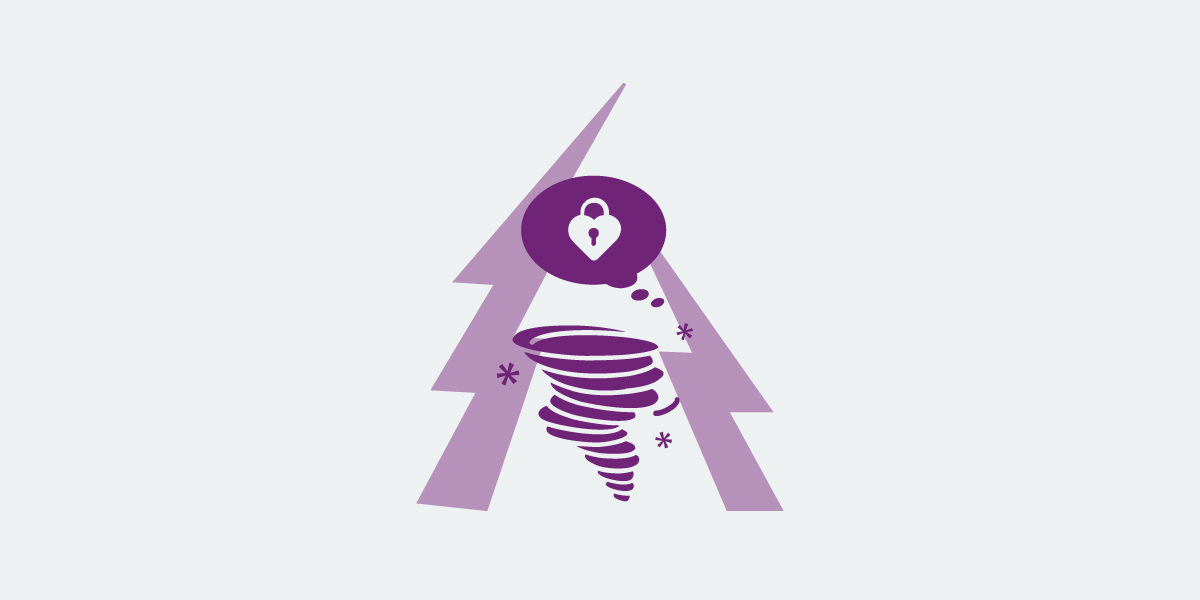Illustration by Katrin Friedmann
2016 in cycle science research
The year in cycle science research
The menstrual cycle is a spectacular and complex dance of hormones, brought to you by evolution. We know a lot about it, and still we’ve just scratched the surface. Our knowledge of the ways the cycle interacts with the rest of the body is growing daily, but remains under-researched.
From cramps and brain size, to habits and willpower — hundreds of cycle-related studies were published this year. Here are some selected highlights of menstrual science in 2016 so far:
1. Certain premenstrual symptoms are linked to inflammation

Large cross sectional study from researchers at UC Davis found a link between premenstrual symptoms and a biomarker for inflammation, called C-reactive protein (CRP). Inflammation is the immune system’s response to infection and injury. It can also happen chronically in the body’s tissues due to factors like a poor diet, obesity, stress and smoking. The study found people with higher CRP were more likely to experience certain premenstrual symptoms, including bloating, mood changes and painful cramps. It’s too early to know if one actually causes the other — one next step is a longitudinal study exploring the correlation. Understanding the underlying causes of painful symptoms will allow us to help prevent their cause, instead of treating or masking symptoms themselves.
2. Hormonal contraception use is linked to higher rates of depression

A cross sectional study of over a million people in Denmark found those taking hormonal birth control (HBC) were more likely to be prescribed antidepressants and/or diagnosed with depression. Similar studies have been done with mixed results, but Denmark’s healthcare data system makes the country especially good at this type of research.
Study participants on combined hormonal birth control pills were 23% more likely to be prescribed an antidepressant. Progestin-only pill users (often called the ‘mini-pill’) were 34% more likely. These numbers jumped to 80% and 120% for adolescent pill-takers (about double the risk, compared with non-pill users). Antidepressants were commonly prescribed within six months of starting the birth control. The association was found to be stronger on average for users of the hormonal patch, ring and IUD.
Just like the inflammation study, this research doesn’t show that HBC causes depression in affected users. The overall risk was also slight — with about 2.2 in 100 users developing depression vs. 1.7 in 100 non-users. Further research may include longitudinal studies, and exploring the reasons why certain people may be more prone to this effect than others.
Emotions are one of the most frequently tracked categories in Clue. Tracking can help you identify mood patterns in yourself, or document changes when starting or switching a hormonal birth control.
3. Brain size may fluctuate with the cycle

A small study conducted at the Max Planck Institute for Human Cognitive and Brain Sciences observed hippocampal volume fluctuating with the cycle’s rise and fall of estrogen. The hippocampus is part of the limbic system and is associated with emotion, mood and memory (it’s one of the areas most affected in Alzheimer’s disease). Researchers found the volume of both grey and white matter in the hippocampus increased around ovulation, when estrogen levels are highest. It’s still unknown exactly what effect these changes may have on cognition and/or behavior, but further research could be specifically helpful in better understanding premenstrual dysphoric disorder (PMDD). Next steps include replicating the finding in a larger study group.
4. There’s a rodent with a human-like menstrual cycle

A lot of research on human health involves mice and rats, partly because their physiology is well-understood, and partly because their biology and behavior is resemblant to that of humans. But because typical mice and rats don’t menstruate, they aren’t good models for studying female reproductive health. The first human-like menstrual cycle in a rodent was identified this year — in a species of spiny mouse (a type of rodent, different than a common mouse). The spiny mouse’s cycle isn’t exactly the same as the human cycle — it lasts 9 days, about 3 of which are spent bleeding — but the ratio of cycle length to bleeding time is similar. It’s still unknown whether the spiny mouse will prove to be a good model for research, but if it is, it could help us in reaching a better understanding of common conditions like endometriosis and in developing effective treatments.
5. Quitting certain bad habits may be easier in the luteal phase

Previous research has shown smokers’ cravings for cigarettes may be more intense in the follicular phase (the first part of the cycle, before ovulation). This new study conducted by the University of Pennsylvania went deeper, exploring how cycle phases influence the neural pathways important for successfully breaking the smoking habit. When progesterone was high (during the luteal phase, after ovulation), there was a stronger active connection between a part of the brain responsible for cravings/rewards, and a part responsible for good decision making. The change, researchers hypothesize, may enhance smokers’ “cognitive control” in the second part of their cycles. Timing your first days of quitting cigarettes with your luteal phase, may make you less prone to cave to your cravings.
Any helpful tools for quitting smoking are good news. Quitting has been shown to be more difficult for women. Despite all that’s known about the risks, cigarette smoking remains the leading cause of preventable death in the United States. In Berlin, where Clue is based, over 1 in 3 people aged 18–25 smoke. The long-term health risks of smoking are higher for women than for men, and smoking can even influence the length your menstrual cycle.
You can track smoking in Clue — it’s in the “party” category. Create some personal tags for your smoke cravings (or the number of cigarettes you smoked in a day), and track your path to cigarette-freedom.
There’s more…

Hundreds of cycle studies came out this year. Some are stronger than others, some elaborate on previous research and some make new suggestions altogether. For example: people may eat about 500 more calories premenstrually and chocolate and carb cravings may be trying to compensate for a premenstrual serotonin drop. Building muscle might be easier in the follicular phase. Irregular cycles may be a risk factor for ovarian cancer. Premenopausal women may notice changes to their sex drive roughly 20 months before their last period. Fertility may be negatively affected by: chronic stress, artificialsweeteners, chemicals in your home (like from vinyl floors) and by a specific strain of herpes. Fertility may also be affected by high alcohol consumption, but not moderate consumption. The list goes on…
Looking forward to upcoming contraception research, the Bill and Melinda Gates Foundation granted 100k to a pilot study this year, examining pre existing pharmaceuticals for properties that could blog the release of an egg without interfering with the hormone cycle. The foundation also gifted $25 million to expand the development and testing of microbicides to protect women against STIs, including HIV.
Clue’s year of research:
We had some findings of our own at Clue this year. We found your cycle is unlikely to be syncing with the moon (even though it might feel that way) and that your Fitbit may one day use heart rate data to help you detect ovulation. On the social front, we conducted the world’s largest global survey on menstrual euphemisms and casually confirmed that too few people know what ovulation is. Ongoing research with our collaborators will help shed light on the cycle and immunity, how cycles have evolved over time and what the menstrual experience in the years after menarche really looks like.
Clue is a dedicated contributor to forwarding female health research. By using Clue you help some of the world’s leading academic institutions better understand the body and health. Clue never sells or releases any data directly. You can read about our privacy policy here.

